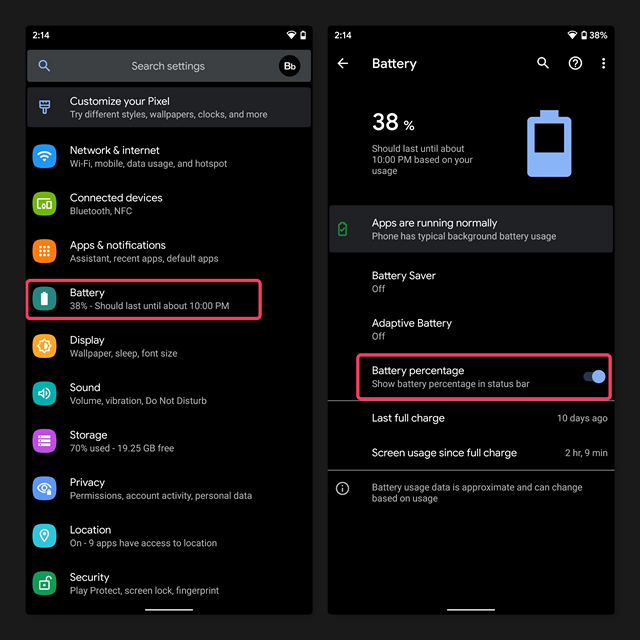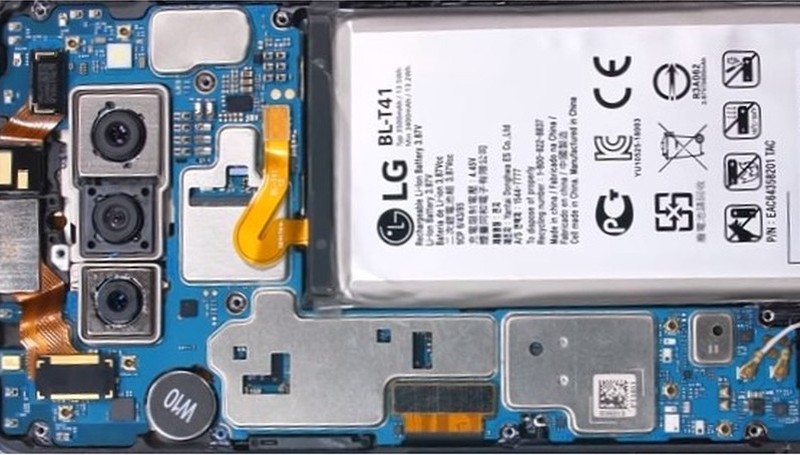
Beyond 5,000mAh: The Engineering Push for All-Day Battery Life in Modern Android Phones
In the relentless evolution of the smartphone, we’ve witnessed various technological arms races. For years, the battle was fought over processor clock speeds, then screen resolution, and most recently, the number of megapixels crammed into a camera sensor. While those frontiers have matured, a new and arguably more critical battleground has taken center stage: battery life. The quiet anxiety of a battery percentage dipping into the red by mid-afternoon is a universal experience, and smartphone manufacturers have taken notice. We are now in the era of the battery, where the latest Android News is less about theoretical performance benchmarks and more about tangible, real-world endurance.
This industry-wide pivot towards larger battery capacities is not merely a marketing gimmick; it’s a direct response to the escalating power demands of modern mobile technology. The very features that make today’s Android phones so compelling—blazing-fast 5G, silky-smooth high-refresh-rate displays, and powerful AI processing—are also the biggest culprits of battery drain. Consequently, engineers are facing a complex challenge: how to integrate larger, heavier power cells into devices that consumers still expect to be sleek, lightweight, and elegant. This article delves into the driving forces behind this trend, the sophisticated engineering solutions making it possible, and what it means for the future of our most essential Android gadgets.
Why Now? The Perfect Storm Fueling the Demand for Bigger Batteries
The recent and aggressive push for higher battery capacity is the result of a confluence of factors. It’s a perfect storm of new hardware capabilities meeting saturated market dynamics, forcing manufacturers to refocus on a core user experience pain point that has been neglected for too long. This shift is less of a sudden innovation and more of a necessary evolution to support the very features that define a modern flagship device.
The Power-Hungry Demands of Modern Mobile Technology
The smartphone of today is a vastly more capable and power-intensive device than its counterpart from just a few years ago. Several key technologies are responsible for this increased energy consumption:
- 5G Connectivity: The rollout of 5G networks has been a game-changer for mobile data speeds, but it comes at a cost. Early 5G modems, and even current ones in areas with patchy coverage, consume significantly more power than their 4G LTE predecessors. The constant searching for and switching between 5G and 4G signals, known as “network hunting,” is a notorious battery drain.
- High Refresh Rate Displays: The jump from a standard 60Hz display to 120Hz or even 144Hz creates a visibly smoother and more responsive user experience. However, redrawing the screen twice as often requires the GPU and display controller to work harder, leading to a power consumption increase that can range from 15% to 25% during active use. While technologies like LTPO help mitigate this, the baseline power draw remains higher.
- Advanced Processing and AI: Modern Systems on a Chip (SoCs) like Qualcomm’s Snapdragon 8 series or Google’s Tensor are computational powerhouses. They feature dedicated Neural Processing Units (NPUs) that handle complex AI and machine learning tasks, from real-time language translation to the computational photography that powers Night Mode and Portrait Mode. These intensive tasks, while brief, demand significant bursts of power.
- Immersive Gaming and Media: Mobile gaming has evolved into a high-fidelity experience with console-quality graphics. Games like Genshin Impact or Call of Duty: Mobile push the GPU to its limits, generating heat and consuming battery at an alarming rate. Similarly, streaming high-dynamic-range (HDR) content from services like Netflix or YouTube places a continuous load on the processor and display.
Shifting Consumer Priorities and Market Saturation
Alongside the technological demands, market forces have also steered manufacturers towards prioritizing battery life. The performance gap between smartphone generations has narrowed. For the average user, the speed difference between last year’s flagship and this year’s model is often imperceptible in day-to-day tasks. Similarly, camera technology has reached a point where most premium and even mid-range phones can take excellent photos. With these traditional selling points offering diminishing returns, manufacturers needed a new, tangible differentiator. Battery life fits this role perfectly. It’s a simple, universally understood metric that directly impacts every user, every single day. A phone that reliably lasts a full day or more under heavy use is a powerful marketing tool in a crowded field of otherwise similar-looking Android phones.

The Art of the Squeeze: Engineering Bigger Batteries into Slim Designs
Simply deciding to use a bigger battery is easy; physically integrating it into a slim, modern smartphone is an immense engineering feat. The internal volume of a phone is a zero-sum game—every cubic millimeter dedicated to the battery must be reclaimed from somewhere else. This has spurred a wave of innovation in battery technology, component miniaturization, and thermal management.
Innovations in Battery Chemistry and Design
To increase capacity without ballooning device size, engineers are rethinking the battery itself. Several key advancements are becoming more common:
- Stacked Battery Technology: Instead of using a single, large lithium-ion cell, this technique involves layering multiple, thinner battery cells on top of each other. This “stacking” method allows for more efficient use of internal space, enabling manufacturers to fill unconventional nooks and crannies within the phone’s chassis. It also offers benefits for charging, as the multiple cells can be charged in parallel, improving speed and heat distribution.
- Dual-Cell Architecture: A popular solution, particularly in phones with ultra-fast charging, is to split the total capacity into two separate, smaller cells. For example, a 5,000mAh battery might be composed of two 2,500mAh cells. When charging, power is delivered to both cells simultaneously. This allows the device to achieve staggering charging speeds (e.g., 120W or more) while keeping the voltage and heat for each individual cell at safer, more manageable levels.
- Emerging Chemistries (Silicon-Anode): Looking ahead, the industry is heavily invested in next-generation battery chemistry. Silicon-anode batteries, which replace the traditional graphite anode with silicon, promise a significant leap in energy density—the amount of energy that can be stored in a given volume. While still in its early stages for smartphones, this technology could allow for 6,000mAh or even 7,000mAh capacities in the same physical footprint as today’s 5,000mAh cells, representing a true paradigm shift.
The Balancing Act: Weight, Thermals, and Component Miniaturization
A larger battery inevitably adds weight and generates more heat, creating a delicate balancing act for designers. To compensate, every other component is under pressure to shrink. We’re seeing more compact motherboard layouts, where the SoC, RAM, and storage are stacked vertically. Camera modules are being redesigned, with periscope zoom lenses allowing for powerful optical magnification without a massive camera bump. Even the SIM tray and speaker enclosures are being shaved down by fractions of a millimeter. Furthermore, advanced thermal management systems are no longer a luxury but a necessity. Large vapor chambers, graphite heat spreaders, and sophisticated software algorithms work in concert to dissipate the heat generated during intensive tasks and fast charging, protecting the battery’s long-term health and ensuring user safety.
Beyond Extended Screen-On Time: How Bigger Batteries Reshape the User Experience
The move towards larger batteries does more than just delay your next trip to the power outlet; it fundamentally changes how we interact with and rely on our devices. It removes the subconscious “power budget” that many users operate on, unlocking the full potential of the hardware they’ve purchased.
A New Baseline for Performance and Usage

With a robust battery, users no longer have to make compromises. They can confidently set their display to its maximum QHD+ resolution and 120Hz refresh rate, knowing the device will still comfortably last the day. This freedom enables new and more demanding use cases. For example, a phone with a 5,500mAh battery can become a reliable navigation tool for a multi-hour road trip without needing to be tethered to a car charger. It can handle an extended, graphics-intensive gaming session on a long commute. For power users, it makes desktop replacement modes like Samsung DeX or Motorola’s Ready For far more practical, allowing for hours of productivity powered solely by the phone. This newfound endurance transforms the smartphone from a device you must carefully manage to a truly dependable tool.
The Software Side of the Equation: Optimization is Still King
However, hardware is only half the story. A large battery paired with inefficient software is like having a large fuel tank in a car with a leaky engine. The Android operating system itself has become increasingly intelligent in managing power. Features like “Adaptive Battery” use on-device machine learning to predict which apps you’ll use and when, limiting background resources for those you use less frequently. Manufacturer-specific software skins (like Samsung’s One UI or Oppo’s ColorOS) add another layer of aggressive optimization. While sometimes controversial for killing background processes too eagerly, these systems are crucial for eking out every last minute of screen-on time. The latest Android News on software updates often highlights these behind-the-scenes optimizations, which are just as important as the physical battery capacity. For developers, this means a greater responsibility to adhere to modern Android development best practices for background tasks and power management to ensure their apps are good citizens in this power-conscious ecosystem.
Navigating the Market: A Buyer’s Guide to Battery-Centric Android Gadgets
As a consumer, it’s tempting to simply choose the phone with the biggest number on the battery spec sheet. However, a more nuanced approach is required to find a device with truly great endurance. The milliamp-hour (mAh) figure is a critical starting point, but it doesn’t tell the whole story.

Looking Beyond the Milliamp-Hour (mAh)
When evaluating new Android gadgets, consider these key factors alongside the raw battery capacity:
- Processor Efficiency: The manufacturing process of the SoC is paramount. A chip built on a 4-nanometer process will generally be more power-efficient than one built on an older 7nm process, performing the same tasks while consuming less energy.
- Display Technology: Look for phones with LTPO (Low-Temperature Polycrystalline Oxide) display panels. This technology allows the screen to dynamically adjust its refresh rate, dropping as low as 1Hz when viewing a static image (like an email or an always-on display) and ramping up to 120Hz for smooth scrolling. This dynamic adjustment provides significant power savings over a screen that is locked at a high refresh rate.
- Software Optimization: Pay attention to reviews that conduct real-world battery life tests. These often reveal how well a manufacturer has optimized its software. A highly polished OS can make a 4,800mAh battery outperform a poorly optimized 5,000mAh one.
- Charging Speed vs. Battery Longevity: Ultra-fast charging (100W+) is convenient, but it also generates more heat, which is the primary enemy of battery health. Over time, this can cause the battery to degrade more quickly. A phone with more moderate 45W or 65W charging, combined with better thermal management and software features to protect the battery, may be a wiser long-term investment.
Tips for Maximizing Battery Health
Once you have your device, you can prolong its battery’s lifespan with a few best practices. Avoid regularly draining the battery to 0% or leaving it plugged in at 100% for extended periods. The ideal range for lithium-ion batteries is between 20% and 80%. Many phones now include software features, such as Samsung’s “Protect battery” or Apple’s “Optimized Battery Charging,” which automatically limit the charge to 80-85% or intelligently time the charging to complete just before you wake up. Using these features can significantly extend the usable life of your device’s battery.
Conclusion
The industry’s renewed focus on battery capacity marks a significant and welcome shift in smartphone design philosophy. It represents a move away from chasing abstract benchmark scores and toward solving a tangible, everyday problem for millions of users. This trend, driven by the power demands of 5G, high-refresh-rate screens, and advanced processors, has spurred remarkable innovation in battery engineering, component design, and software optimization. For consumers, the outcome is overwhelmingly positive: a new generation of Android phones that are more reliable, more capable, and finally able to keep pace with our increasingly connected lives. As we look to the future, the pursuit of longer-lasting devices will continue to be a defining feature of the mobile landscape, ensuring that battery anxiety may soon become a relic of the past.



